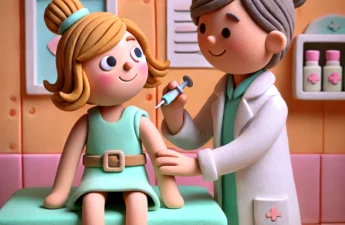
The Research Brief is a short take about interesting academic work.
The big idea
White children are especially likely to be overdiagnosed and overtreated for attention-deficit/hyperactivity disorder during elementary school. That is the key finding from our recent peer-reviewed study.
We analyzed data from 1,070 U.S. elementary school children who had displayed above-average behavioral, academic or executive functioning the year before their initial ADHD diagnoses. We considered these children as unlikely to have ADHD. Children diagnosed and treated for ADHD should display chronically inattentive, hyperactive or impulsive behaviors that impair their functioning and result in below-average academic or social development.
Among elementary school children who had shown above-average academic achievement, 27% of white children versus 19% of nonwhite children were later diagnosed with ADHD. About 20% of white children versus 14% of nonwhite children were using ADHD medication. Among children who had previously been well-behaved in classrooms, 13% of white children versus 8% of nonwhite children were later diagnosed with ADHD. Families’ socioeconomic status or children’s age did not explain these disparities.
We did find that ADHD diagnosis and treatment is very uncommon among elementary school children displaying above-average behavioral, academic or executive functioning. We observed ADHD diagnosis and treatment to occur in less than 5% of this group. Our findings are consistent with prior work examining racial and ethnic disparities among children unlikely to have ADHD.
Why it matters
Among U.S. children and adolescents, ADHD prevalence has increased significantly, from 6% to 10% over the past 20 years. Overdiagnosis may be contributing to this trend. Increases in ADHD prevalence in children are occurring among those displaying mild impairments.
Overdiagnosis stretches already limited mental health resources and allocates them away from children who need them most. Overdiagnosis may also contribute to stigma and skepticism toward those experiencing significant or moderate impairments.
ADHD diagnosis and treatment has been shown to be beneficial for the larger group of children with significant ADHD symptoms and impairments. However, for the smaller group of children with no or only mild symptoms, ADHD diagnosis may result in lower academic achievement and behavior during elementary school.
Children with mild ADHD may be more likely to compare themselves with children without disabilities, and so adopt negative ability beliefs that interfere with their learning and behavior. Overtreatment also unnecessarily exposes children to medication’s negative side effects, such as sleep problems or depressed appetites.
What still isn’t known
We don’t know why white children in elementary school are especially likely to be overdiagnosed and overtreated for ADHD. One possibility is that white parents are more likely to seek diagnoses and treatments because they are more accepting of ADHD as a health condition. Limited research suggests that some parents may be attempting to obtain ADHD diagnoses and medications as a way to increase their children’s academic achievement.
We couldn’t investigate whether white children are more likely to be overdiagnosed and overtreated for ADHD during middle or high school because our study’s data collection ended at the end of elementary school.
What’s next
Researchers are repeatedly calling for investigations of ADHD overdiagnosis and overtreatment. We are extending our research by examining whether disparities in ADHD diagnosis and treatment vary for boys and girls by race and ethnicity.
Paul L. Morgan, Eberly Fellow, Professor of Education and Demography, and Director of the Center for Educational Disparities Research, Penn State
This article is republished from The Conversation under a Creative Commons license.
Read the original article.


